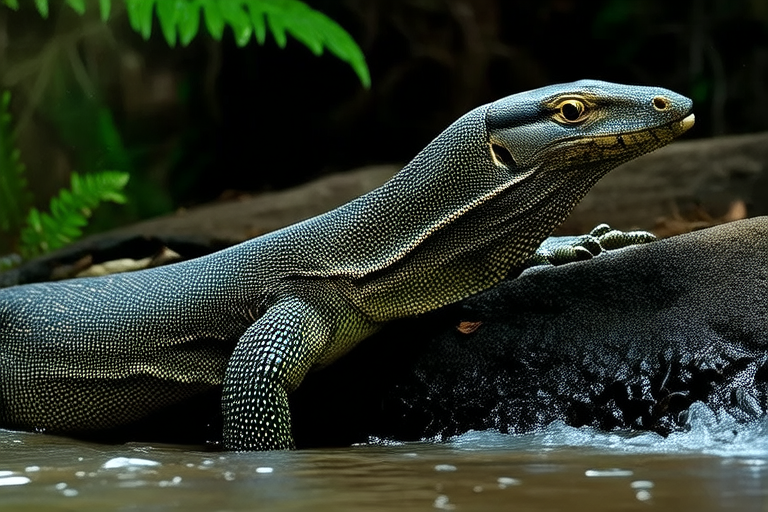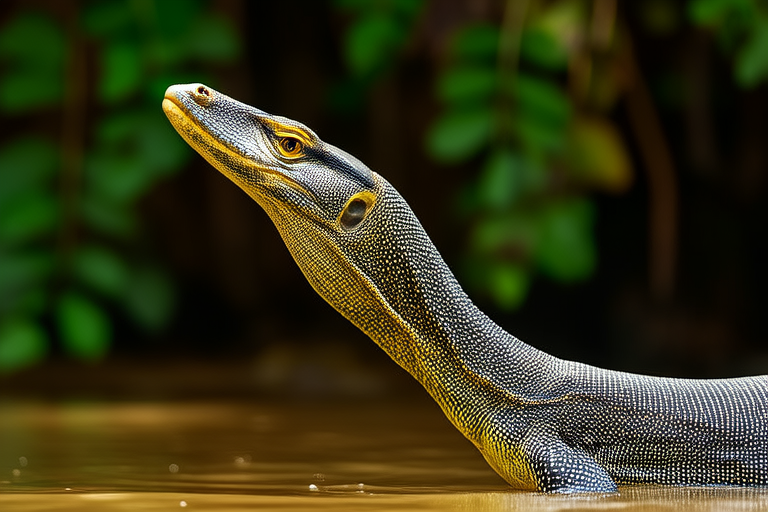
The Enigmatic Water Monitor: Myths, Facts, and Why They’re More Than Just Lizards
Water monitors, often shrouded in mystery and misconception, are some of the most fascinating creatures in the reptile world. These large lizards, scientifically known as Varanus salvator, have captured the imagination of people across Southeast Asia and beyond. However, many myths surround these animals, leading to misunderstandings about their nature and role in ecosystems. Let’s dive into the truth behind these enigmatic creatures, exploring their habitat, diet, behavior, and the unique adaptations that make them stand out from typical lizards.
Dispelling Common Myths About Water Monitors
One of the most prevalent myths is that water monitors are dangerous to humans. While it’s true that water monitors can be aggressive if threatened, they generally prefer to avoid confrontation. Another myth is that they are venomous. Unlike certain snakes, water monitors lack venom glands, though they do have mildly toxic saliva that can cause infections if a bite occurs. Lastly, there’s the misconception that they are slow and clumsy. In reality, water monitors are agile, both on land and in water, capable of swimming swiftly and climbing trees with ease.
Habitat and Range
Water monitors are native to Southeast Asia, ranging from India through Malaysia, Indonesia, and parts of the Philippines. Their preferred habitats are varied but often include areas near water bodies such as rivers, swamps, and coastal regions. These lizards thrive in environments where they can access both aquatic and terrestrial spaces, making them highly adaptable to different landscapes. Their ability to live in diverse habitats is one of the reasons they are so successful in their natural environment.
Diet and Feeding Habits
Water monitors are opportunistic feeders, meaning they will eat whatever is available. Their diet consists mainly of small mammals, birds, eggs, fish, insects, and even carrion. They are known for their powerful jaws and sharp teeth, which allow them to tackle prey much larger than themselves. Interestingly, water monitors also exhibit a form of cooperative hunting, where several individuals work together to catch larger prey. This behavior showcases their intelligence and social skills, traits not commonly associated with reptiles.
Behavior and Social Structure
Despite their solitary nature, water monitors are surprisingly intelligent and have been observed using tools. For instance, they’ve been seen using sticks to dig for food or to reach items out of their immediate reach. Their cognitive abilities extend to problem-solving, which helps them survive in their complex environments. Additionally, water monitors communicate through a variety of methods, including body language, vocalizations, and scent marking. These forms of communication help them establish territories and find mates.
Unique Adaptations
One of the most remarkable features of water monitors is their ability to breathe underwater for extended periods. They can hold their breath for up to 30 minutes, thanks to specialized muscles around their throat that allow them to store oxygen. This adaptation is crucial for their survival, enabling them to hunt effectively in aquatic environments. On land, their long tails serve multiple purposes. Not only do they use it for balance while running, but they also employ it for defense, swinging it at predators or rivals. Furthermore, their strong limbs and sharp claws make them adept climbers, allowing them to escape threats or access high perches for basking.
Intelligence and Communication
Water monitors are far from the mindless reptiles many assume them to be. Studies have shown that they possess problem-solving skills comparable to those of some primates. They can learn from past experiences and adapt their behavior accordingly. Their communication methods are equally sophisticated. They use a range of vocalizations, from hisses to growls, to express aggression, fear, or courtship. Scent marking is another essential part of their communication repertoire, helping them identify territory boundaries and potential mates.
Ecological Importance
Water monitors play a vital role in their ecosystems. As apex predators, they control populations of smaller animals, maintaining a balance within their habitats. By preying on rodents and other pests, they help prevent overpopulation, which can lead to crop damage and disease spread. Additionally, their scavenging habits contribute to nutrient cycling, ensuring that organic matter is broken down efficiently. Despite their importance, water monitors face numerous threats, including habitat destruction, illegal pet trade, and hunting for their skins and meat.
Misconceptions and Respect
It’s easy to see why water monitors have earned a reputation for being fierce and formidable. However, this perception often leads to unnecessary fear and misunderstanding. The truth is that water monitors are simply doing what they need to survive in their challenging environments. They deserve our respect not just as impressive predators but also as intelligent, adaptable creatures that have evolved to thrive in diverse habitats. Understanding and appreciating their complexity can help foster greater conservation efforts and protect these remarkable lizards for future generations.




